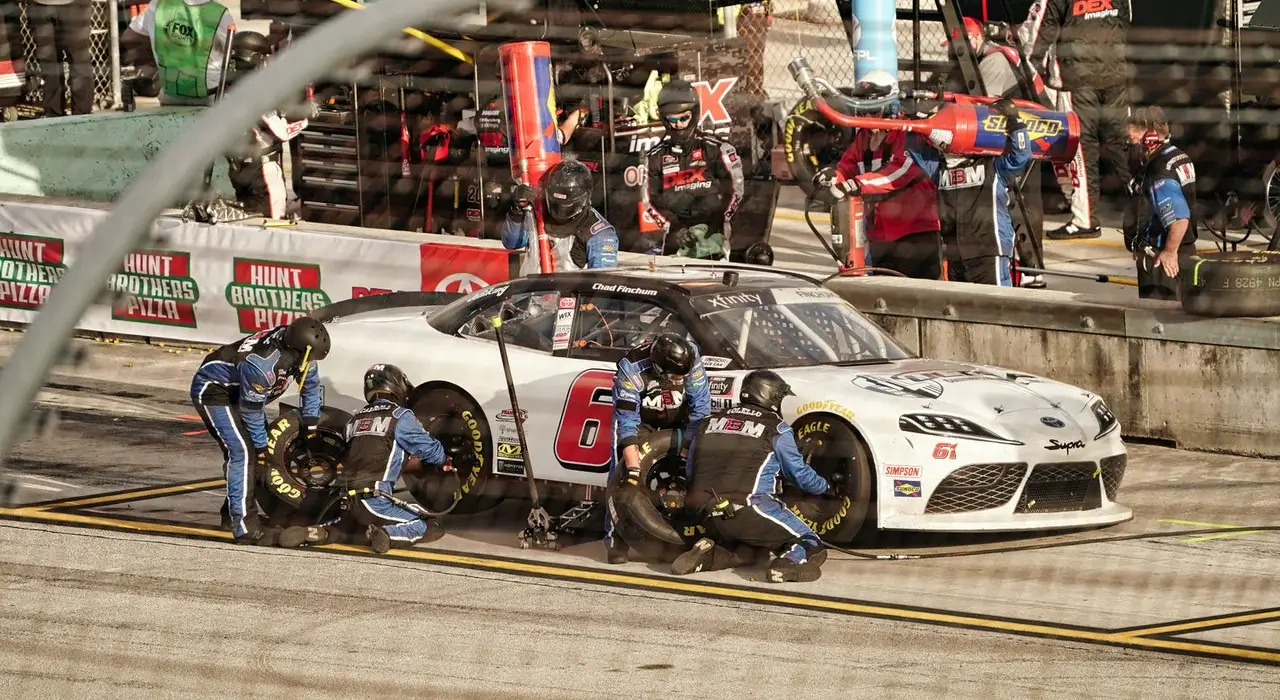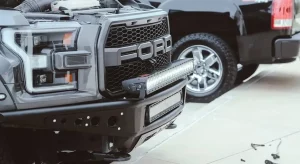There have been several generations of NASCAR vehicles over the years. Each time a new car specification is released by the organization, extra parts are usually added to the list of core specifications. This is the reason behind the false belief that all NASCAR cars are the same – they have the same tires, fuel and fuel systems, transmissions, and electronics.
These stringent rules are strict for a reason – they keep the race close whilst also helping to ensure the safety of drivers, but they also give the teams some wiggle room with respect to the engines and body shells of their cars.
Whilst the vehicles may look quite similar as they scream past you when watching a race trackside, this is in fact the result of decades of engineering progress on the parts of the three competing manufacturers – Chevrolet, Ford, and Toyota.
Certain engine specifications and car shapes just work better than others, and when a team makes a change that provides a major advantage, the remaining teams would be fools not to take an interest and seek inspiration from their competitor’s changes.
If a team shifts dramatically in that season’s Nascar betting odds, you can be sure that an engineering change will be behind this. It is this constant fight for engineering dominance that attracts millions of fans to NASCAR, year after year.
The Differences Between NASCAR Vehicles
Each year, NASCAR will provide all the participating teams with a “template” specification that their cars are required to satisfy to race next season. The current template is known as the “Generation 6 Racecar”, and it whilst it provides an ample basis for the teams to work around, it is still very much a “blank slate” that the teams need to research and develop further if they want to be the quickest car on the oval that season.
Suggestion: 9 Best New Sports Cars In 2022 That Deliver Stunning Performance
A Generation 6 NASCAR vehicle has a fixed chassis design, regardless of which manufacturer builds the rest of the car, featuring a lattice of steel tubes constructed into an inner frame. The body shell, responsible for much of the aerodynamic performance of the vehicles, is uniquely designed by each manufacturer and is the first major area where teams can work to enhance the speed and handling of their vehicles. A roll cage is built inside of the inner frame to protect drivers in the event of a crash.
With the body of the car complete, each vehicle is fitted with identical sets of Goodyear racing slicks, suspension, electronics, and transmission. These components are all considered inconsequential to the performance of the cars, so it makes sense to keep them as close as possible between teams to ensure a close race. The engines featured in each car are also required to meet some NASCAR technical regulations.
Every NASCAR vehicle is required to include a 5.86-liter pushrod V8 engine with 750 horsepower. This sounds like it should be limiting for individual teams, but that is not the case. The three manufacturers spend millions of dollars each season to fine-tune their engines, experimenting with a variety of different components before testing and re-testing to establish their performance and efficiency.
How does NASCAR Ensure Compliance?
Before each race, NASCAR will inspect every race car to ensure that the teams have not deviated too far from the template specifications. A device known as “the claw” is positioned over the front of each vehicle to ensure that the front end has not been altered beyond the allowed specifications, followed by a mechanical inspection of the fuel systems, suspension components, and the engine. Sometimes cars will be removed from a race at the last minute because of these checks, but this is not the last hurdle that teams must jump.
After a race has been completed, NASCAR will re-inspect the top five runners to ensure that the result of the race is valid. This is often the most thorough inspection a car will be subjected to and has resulted in the occasional disqualification after a race has been completed.
The possibility of being disqualified after winning a race provides a huge incentive for teams to ensure they are playing by the rules and has ensured that NASCAR remains one of the safest and most tightly fought motorsport competitions of the modern-day.
Discover more from Locar Deals
Subscribe to get the latest posts to your email.






